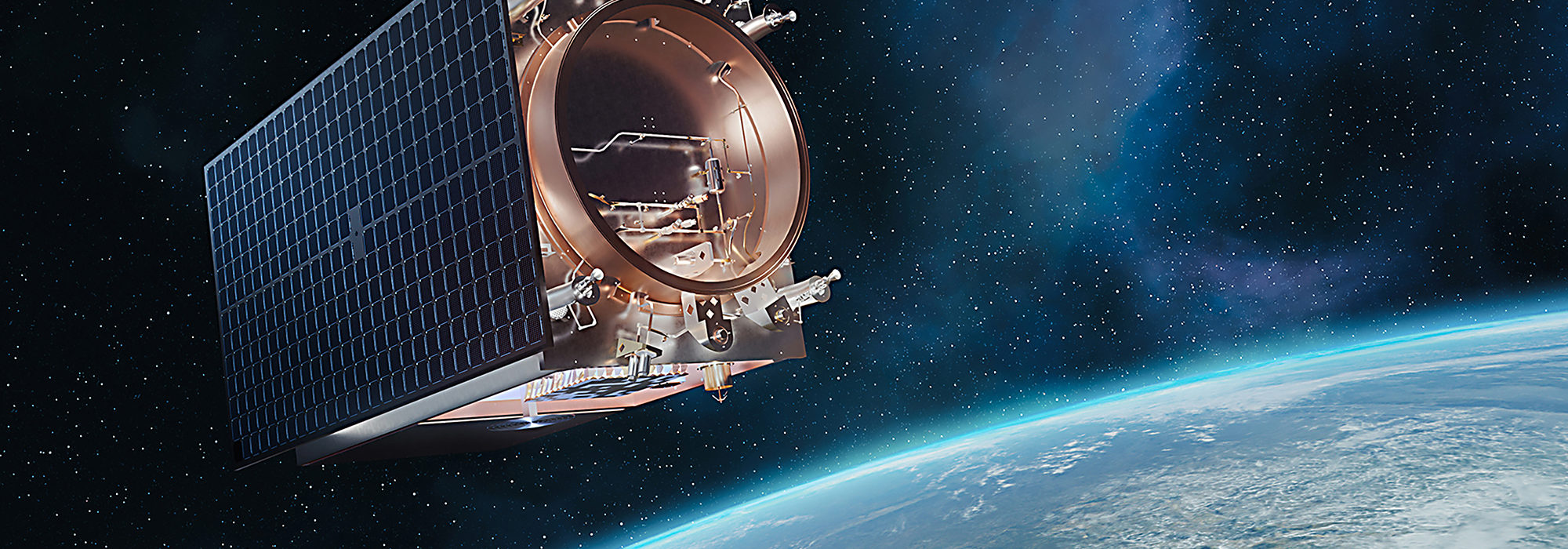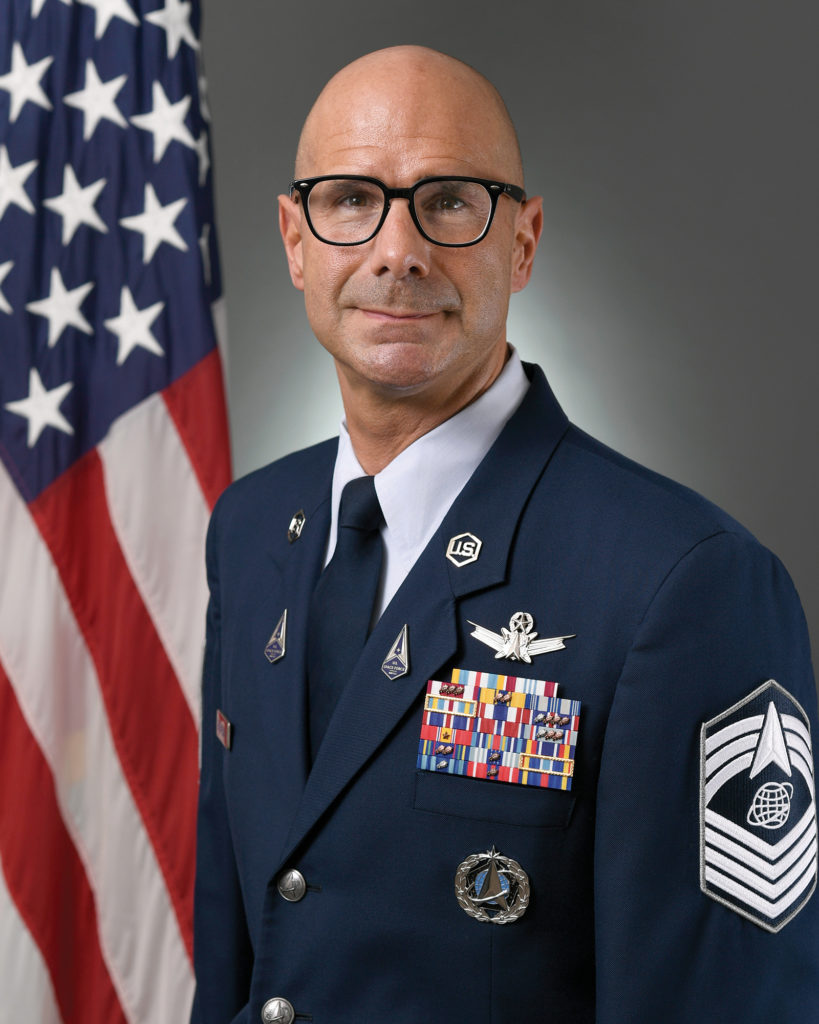Space Force Eyes Fielding Its Own ISR Satellites
By Greg Hadley
W
ith the Air Force giving up on aging intelligence, surveillance, and reconnaissance planes, the Space Force finds itself seeking a way to take on that mission—and defining the capabilities it needs to do so, the head of Space Operations Command said May 24.
Space-based ISR is ultimately seen as replacing airborne ISR for hitting mobile targets on the ground. ISR from space has traditionally been an intelligence function, but frequently unavailable in a timely way to military operators. That’s going to have to change, Lt. Gen. Stephen N. Whiting suggested during a Mitchell Institute for Aerospace Studies webinar.
The National Reconnaissance Office owns most of the government surveillance satellite technology and a rapidly expanding commercial industry is growing around space-based sensing, technologies that have aided Ukraine in its fight against Russia.
Where does that leave the Space Force?
“If we look at the other services, which have been around a lot longer than the Space Force, all of them have tactical Title 10 ISR capability that they retain or they present to a combatant command to execute missions on behalf of tactical warfighters,” Whiting said. “So as we think about that for the Space Force, it’s no different in the Space Force than the other domains, but we need to start by looking at what exists today.”
Whiting said the U.S. has the “world’s best” ISR capabilities today, between the NRO and industry, but having what’s best today isn’t the same as having what’s needed tomorrow.
Replacing Aircraft?
The issue is especially critical now as aging ISR aircraft are being retired. Deputy Chief of Staff for ISR and Cyber Effects Operations Lt. Gen. Leah G. Lauderback said those changes are necessary and unavoidable.
“The truth is, [the divestitures] were backed up by a number of studies over the last number of years, that this is the right thing to do in order to get ready for a peer competitor,” Lauderback said. Current ISR aircraft cannot survive in a conflict with China or Russia, but because divestments are occurring without immediate replacements—at least publicly acknowledged ones—there may be “small gaps” in ISR during the transition, Lauderback confirmed.
“This is a team sport, and that team includes the Intelligence Community,” Lauderback said. “We continue to have conversations with the Intelligence Community, primarily with the [National Reconnaissance Office], but also the combat support agencies, who are the functional managers for those capabilities.”
Space-based ISR will be pivotal in the years ahead, as new satellite technologies mature. “We’re going to have incredible amounts of sensors that are coming that are space-based and thus have a certain amount of resiliency, more resiliency or more survivability, certainly, than some of the airborne capabilities that [the Air Force is retiring],” said Lauderback.
Satellites are also more persistent, able to stay on constant watch, something airborne platforms cannot do. When Lauderback was director of intelligence for Operation Inherent Resolve in the Middle East, the command lacked the ability to keep constant watch. “We didn’t have persistence to be able to chase ISIS around” with Joint STARS aircraft, she said. “The things that we had persistence with were [uncrewed] MQ-9s, Global Hawks would help us for sure. But in a permissive environment like that you can have that persistence. That persistence is very, very satisfying as a targeteer—somebody that wants to be able to track, in this case, ISIS maneuvering from one place to the next. We need to do that for peer competitors as well, for when or if we go into conflict, … before conflict even.”
Of course, making all those connections and ensuring the Air Force and other branches have access to all the intelligence they need presents other challenges. Lauderback called for more table-top exercises for the Pentagon to help determine and inform what space-based ISR will look like in the coming years.
But at the moment, she said she is encouraged by the Air Force’s conversations with the Space Force and Intelligence Community.
“I would actually tell you that any space-based ISR—whether it’s owned by an intelligence agency today or if it is a DOD entity—you can use those things in tactical environments,” Lauderback said. “It’s just a matter of the scale that you can do, how long it is that you can use those in a tactical sense. So we certainly have experience using those in a tactical sense today and nothing that stops us from doing that in the future.”
Lauderback has unique insight into how the Air Force and space-based ISR can work together, given her stints as the Space Force’s first deputy chief of space operations for intelligence and as U.S. Space Command’s director of intelligence give her particular insight into what space can do for the Air Force. And she’s hard at work trying to access whatever the IC can offer the military branches.
Whiting said the question of ownership isn’t what’s most important. “I just don’t think we should be concerned if we do land in a place that says ‘Hey, the Space Force will have retained capability for our own purposes to support tactical warfighting like the other services do,’” she said. “But no decisions have been made, and those discussions are ongoing.”
Retired Gen. Kevin P. Chilton, USAF, Explorer Chair at the Mitchell Institute’s Spacepower Advantage Center of Excellence (MI-SPACE), said it makes sense for the Space Force to have its own “in-house” ISR capabilities to provide for the needs of combatant commanders around the world.
“There’s a reason it’s called national reconnaissance—it’s not combatant commander reconnaissance,” said Chilton, who served as the head of Air Force Space Command and U.S. Strategic Command. “And my sense is the services’ job is to support the combatant commanders. That needs to be their No. 1 priority. When it’s a national asset, appropriately so, there are national requirements that could perhaps trump the requirements of a combatant commander, even when he or she is engaged.”
Whiting likewise noted the need to understand the requirements on the tactical edge—where warfighters are operating—suggesting there may be a gap the Space Force needs to fill.
“I think we’ve got to look at what capabilities are out there today and where the taskings are coming from, and then what’s ultimately getting to the tactical warfighter,” said Whiting. “And if between what’s in the National Reconnaissance enterprise and what’s in commercial, we need to develop something new, then we’ll figure that out where that command and control and tasking lies.”
Bentivegna Named Next CMSSF
By Greg Hadley
The Space Force’s next top enlisted Guardian will be a space operator: Chief Master Sgt. John F. Bentivegna will succeed CMSSF Roger A. Towberman later this year.
Chief of Space Operations Gen. B. Chance Saltzman selected Bentivegna on May 5, the service announced.
Bentivegna is a 29-year veteran now advising the Deputy CSO for Operations Lt. Gen. DeAnna Burt and is also the Enlisted Space Systems Operations Career Field Manager. He was Command Chief at Space Operations Command in his prior role.
Experienced in both maintenance and space operations, Bentivegna joined the Air Force in 1994 and transferred into the Space Force in September 2020. As the second-ever CMSSF, he will be responsible for advising Saltzman on the welfare and readiness of the Space Force’s Guardians.
He’ll face a tall order in succeeding Towberman, whose energetic, affable, and compassionate style connected well with Guardians—and the public. He was willing to try almost anything, including a late-night TV appearance from Greenland, singing with the Air Force’s Max Impact rock band, and speaking directly to Guardians on the Space Force’s unofficial Reddit page.
In a statement, Towberman praised Bentivegna’s selection. “He’s been right here with us every step of the way,” Towberman said. “He knows where we’ve been and believes in where we’re going. I couldn’t be happier for our Guardians or more proud of how it’s all coming together. He’s exactly who we need right now.”
Bentivegna was one of five finalists for the position, all of whom underwent a four-day evaluation that “vetted their skills and leadership capabilities” and included a personal interview with Saltzman, according to a Space Force release.
“I needed someone that would bring a perspective on our future that was articulated differently from mine,” Saltzman said in the release. “Someone who could (and would) challenge my assumptions and ensure that important issues were evaluated from multiple angles and would catch things I missed. All the candidates had tremendous experience, skills, and expertise and it made it a close run.”
“It’s overwhelming and incredibly humbling to be offered the opportunity to become the next Chief Master Sergeant of the Space Force,” Bentivegna said in a statement. “I am really excited to have that opportunity to work next to General Saltzman to help fulfill his vision for where the service needs to go.”
A Space Force spokeswoman told Air & Space Forces Magazine there is no established date yet for Bentivegna to formally take the reins from Towberman, who will retire later this year.
When Bentivegna does take over, though, he’ll take on a range of duties and fill big shoes. Towberman, who was just the second Guardian in the force, helped the Space Force take new approaches to traditional military personnel structures and processes, noting how its small size made it ideal for experimentation.
Among those new approaches is a radically different physical fitness program defined by “holistic health” and fitness trackers for continuous monitoring, instead of annual tests. The service is also hoping to move away from tests and toward promotion boards for every rank above E-4. The plan is also to establish an entirely new “Space Component” that combines part-time and full-time Guardians instead of the traditional Active-duty/Reserve model.

